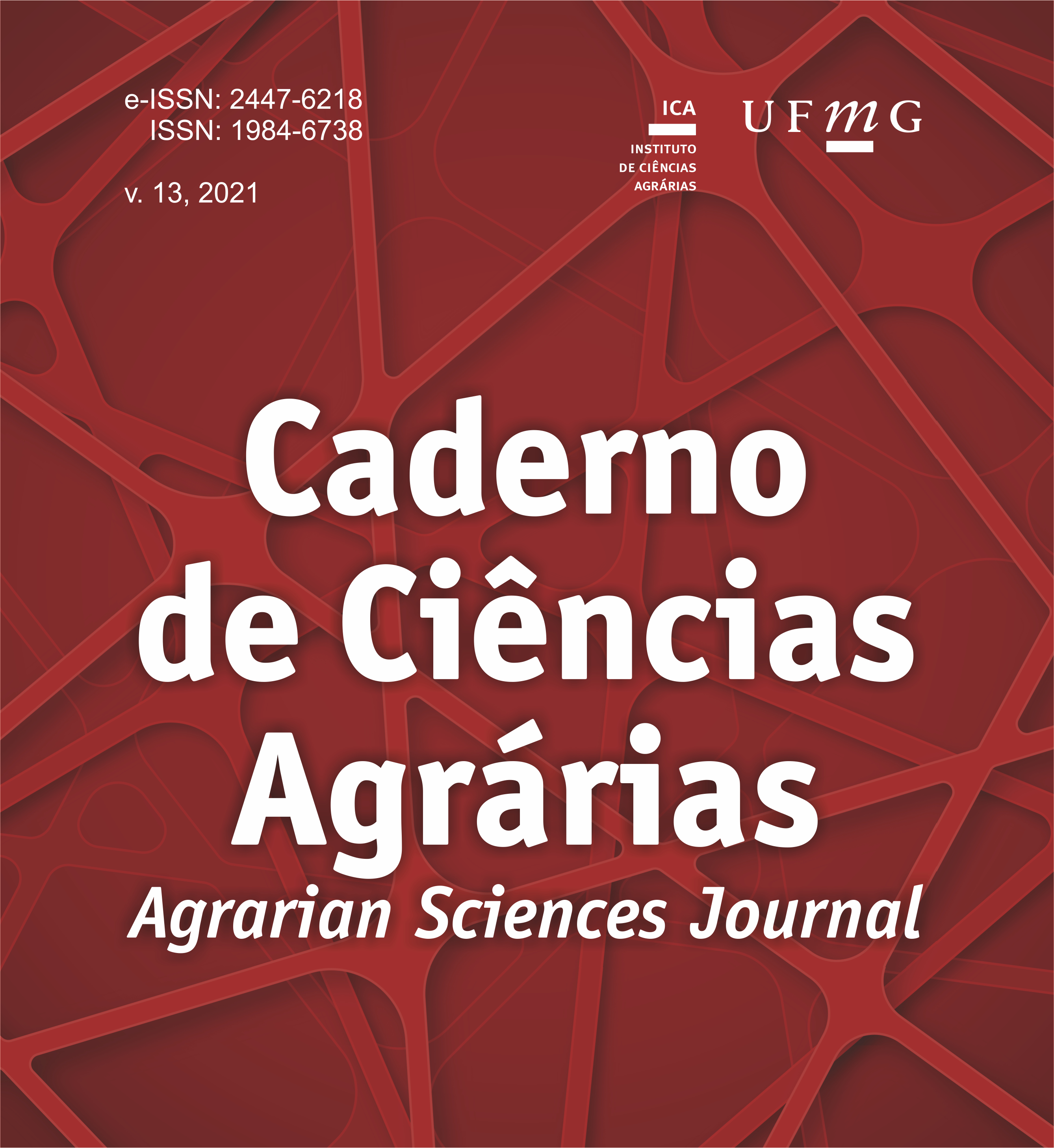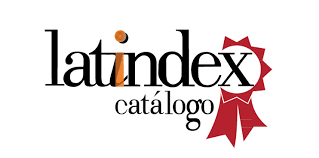Legislation and standards for the assessment of welfare in poultry production
DOI:
https://doi.org/10.35699/2447-6218.2021.32462Keywords:
Environmental legislation, Ethics, Poultry farming, Poultry productionAbstract
In the evolution of the aviculture, several changes in management, nutrition, genetics and environment
could be observed over the years. The consumer profile of poultry products has changed and are increasingly aware of
the need to take up welfare practices in poultry production. Thus, the objective of this literature review is to highlight
the current scenario of the main poultry producing countries, highlighting legislation and recommendations for creation that fall on well-being. Intensive production models cause changes in the behaviors inherent to the species. This
situation occurs due to the experience in a stressful environment, with a high stocking rate when it comes to cut birds
or cage housing throughout the productive period of laying birds. From a practical point of view, positive well-being
1
Universidade Federal da Grande Dourados. Dourados. Dourados, MS. Brasil.
http://orcid.org/0000-0002-0756-5050
2
Universidade Federal da Grande Dourados. Dourados. Dourados, MS. Brasil.
http://orcid.org/0000-0001-7589-4094
3
Universidade Federal da Grande Dourados. Dourados. Dourados, MS. Brasil.
http://orcid.org/0000-0001-8547-4149
4
Universidade Federal da Grande Dourados. Dourados. Dourados, MS. Brasil.
https://orcid.org/0000-0002-5226-3158
5
Universidade Federal da Grande Dourados. Dourados. Dourados, MS. Brasil.
https://orcid.org/0000-0002-4967-5899
6
Universidade Federal da Grande Dourados. Dourados. Dourados, MS. Brasil.
https://orcid.org/0000-0001-7895-1314
7 Universidade Federal da Grande Dourados. Dourados. Dourados, MS. Brasil.
https://orcid.org/0000-0002-4978-9386
8 Universidade Federal de Mato Grosso do Sul. Campo Grande, MS. Brasil.
https://orcid.org/0000-0002-7860-0933
*Autor para correspondência: kaique.tim@hotmail.com
Recebido para publicação em 16 de março de 2021 Aceito para publicação em 27 de abril de 2021
e-ISSN: 2447-6218 / ISSN: 2447-6218 / © 2009, Universidade Federal de Minas Gerais, Todos os direitos reservados.
Vargas, L. B. et al.
2
Cad. Ciênc. Agrá., v. 13, p. 01–08, https://doi.org/10.35699/2447-6218.2021.32462
can be obtained through the arrangement of animals in an environment suitable for their breeding, allowing to express the maximum behaviors and natural aspects. The production of birds in enriched environments with adequate
dimensions has been of paramount importance, especially internationally
Downloads
References
Andreazzi, M. A., Pinto, J. S., dos Santos, J. M. G., Cavalieri, F. L. B., da Silva Matos, N. C., & Barbieri, I. O. (2018). Desempenho de frangos de corte criados em aviário convencional e dark-house. Revista da Universidade Vale do Rio Verde, 16(1). DOI: http://dx.doi.org/10.5892/ruvrd.v16i1.4912
Angel, R. (2007). Metabolic disorders: limitations to growth of and mineral deposition into the broiler skeleton after hatch and potential implications for leg problems. Journal of Applied Poultry Research, 16(1), 138-149. DOI: https://doi.org/10.1093/japr/16.1.138
Araújo, J. D. S., Oliveira, V. D. D., & Braga, G. C. (2007). Desempenho de frangos de corte criados em diferentes tipos de cama e taxa de lotação. Ciência Animal Brasileira, 8(1), 59-64.
Baracho, M. S., Nääs, I. A., Betin, P. S., & Moura, D. J. (2018). Factors that Influence the Production, Environment, and Welfare of Broiler Chicken: A Systematic Review. Brazilian Journal of Poultry Science, 20(3), 617-624. DOI: http://dx.doi.org/10.1590/1806-9061-2018-0688
Barbosa Filho, J. A., Silva, I. J., Silva, M. A., & Silva, C. J. (2007). Avaliação dos comportamentos de aves poedeiras utilizando seqüência de imagens. Engenharia Agrícola, 27(1), 93-99. DOI: https://doi.org/10.1590/S0100-69162007000100002
Bessei, W. (2006). Welfare of broilers: a review. World's Poultry Science Journal, 62(3), 455-466.
Bond, G. B., Almeida, R. D., Ostrensky, A., & Molento, C. F. M. (2012). Métodos de diagnóstico e pontos críticos de bem-estar de bovinos leiteiros. Ciência Rural, 42(7), 1286-1293. DOI: http://dx.doi.org/10.1590/S0103-84782012005000044
Broom, D. M. (2007). Quality of life means welfare: how is it related to other concepts and assessed?. ANIMAL WELFARE-POTTERS BAR THEN WHEATHAMPSTEAD-, 16, 45.
Broom, D. M., & MOLENTO, C. F. M. (2004). Bem-estar animal: Conceito e Questões relacionadas revisão. Archives of veterinary Science, 9(2). https://revistas.ufpr.br/veterinary/article/viewFile/4057/3287
Carvalho, D., Moraes, L. B. D., Rocha, S. L. D. S., SALLE, C. T. P., & AVANCINI, C. A. M. (2017). Atividade dos desinfetantes cloreto de benzalcônio e iodóforo sobre cepas de Escherichia coli patogênica aviária isoladas em frangos de corte. Revista Brasileira de Saúde e Produção Animal, 18(1), 10-15. https://doi.org/10.1590/s1519-99402017000100002
De Haas, E. N., Bolhuis, J. E., de Jong, I. C., Kemp, B., Janczak, A. M., & Rodenburg, T. B. (2014). Predicting feather damage in laying hens during the laying period. Is it the past or is it the present?. Applied Animal Behaviour Science, 160, 75-85. DOI: https://doi.org/10.1016/j.applanim.2014.08.009
De Jong, I. C., & Guémené, D. (2011). Major welfare issues in broiler breeders. World's Poultry Science Journal, 67(1), 73-82.DOI: https://doi.org/10.1017/S0043933911000067
Gilani, A. M., Knowles, T. G., & Nicol, C. J. (2014). Factors affecting ranging behaviour in young and adult laying hens. British poultry science, 55(2), 127-135. DOI: 10.1080/00071668.2014.889279
Grilli, C., Loschi, A. R., Rea, S., Stocchi, R., Leoni, L., & Conti, F. (2015). Welfare indicators during broiler slaughtering. British poultry science, 56(1), 1-5. DOI: 10.1080/00071668.2014.991274
Gundim, L., Rodrigues, E., Blanca, W., Coleto, A., & Medeiros, A. (2015). Causas de condenações de frangos de corte relacionadas a manejo e ambiência. Enciclopédia Biosfera, 11(21). http://www.conhecer.org.br/enciclop/2015b/agrarias/Causas%20de%20condenacao%20de%20frangos.pdf
Hughes, B. O. (1983). Conventional and shallow cages: A summary of research from welfare and production aspects. World's Poultry Science Journal, 39(3), 218-228.
Janczak, A. M., & Riber, A. B. (2015). Review of rearing-related factors affecting the welfare of laying hens. Poultry Science, 94(7), 1454-1469. DOI: https://doi.org/10.3382/ps/pev123
Joseph, P., Schilling, M. W., Williams, J. B., Radhakrishnan, V., Battula, V., Christensen, K., ... & Schmidt, T. B. (2013). Broiler stunning methods and their effects on welfare, rigor mortis, and meat quality. World's Poultry Science Journal, 69(1), 99-112. DOI: https://doi.org/10.1017/S0043933913000093
Kaukonen, E., Norring, M., & Valros, A. (2017). Evaluating the effects of bedding materials and elevated platforms on contact dermatitis and plumage cleanliness of commercial broilers and on litter condition in broiler houses. British poultry science, 58(5), 480-489. DOI: 10.1080/00071668.2017.1340588
Lambton, S. L., Nicol, C. J., Friel, M., Main, D. C., McKinstry, J. L., Sherwin, C. M., ... & Weeks, C. A. (2013). A bespoke management package can reduce levels of injurious pecking in loose‐housed laying hen flocks. Veterinary Record, 172(16), 423-423. DOI: https://doi.org/10.1136/vr.101067
Leão PA, de Oliveira LB, de Andrade, MC, Hergot IG, Xavier, RGC, Leal CA, Associada SDP. Salmonelose tífica em aves de subsistência e de postura comercial: relato de três surtos com ênfase no diagnóstico, epidemiologia e controle. Embrapa Suínos e Aves-Artigo de divulgação na mídia (INFOTECA-E). 2018.
Manning, L., Chadd, S. A., & Baines, R. N. (2007). Water consumption in broiler chicken: a welfare indicator. World's Poultry Science Journal, 63(1), 63-71. DOI: https://doi.org/10.1017/S0043933907001274
Mench, J. A. (2002). Broiler breeders: feed restriction and welfare. World's Poultry Science Journal, 58(1), 23-29. DOI: https://doi.org/10.1079/WPS20020004
Mendes, A. A., & Komiyama, C. M. (2011). Estratégias de manejo de frangos de corte visando qualidade de carcaça e carne. Revista Brasileira de Zootecnia/Brazilian Journal of Animal Science, 352-357. http://www.sbz.org.br/revista/artigos/66290.pdf
Moraes, J. E., Borges, M. R., Amoroso, L., Reis, T. L., Calixto, L. F. L., Lagassi, T. C., ... & Pizzolante, C. C. (2020). Bien estar de gallinas ponedoras y la osteoporosis. Research, Society and Development, 9(3), e150932588-e150932588. DOI: https://doi.org/10.33448/rsd-v9i3.2588
Netto, D. A., Lima, H. J. D. A., Alves, J. R., Morais, B. C. D., Rosa, M. S., & Bittencourt, T. M. (2018). Production of laying hens in different rearing systems under hot weather. Acta Scientiarum. Animal Sciences, 40. https://doi.org/10.4025/actascianimsci.v40i1.37677
OIE- Código Sanitário dos Animais Terrestres. (2016). Cap. 7.10.1. Bem Estar Animal e Sistemas de Produção de Frango de Corte.
Persyn, K. E., Xin, H., Nettleton, D., Ikeguchi, A., & Gates, R. S. (2004). Feeding behaviors of laying hens with or without beak trimming. Transactions of the ASAE, 47(2), 591.
Pettersson, I. C., Freire, R., & Nicol, C. J. (2016). Factors affecting ranging behaviour in commercial free-range hens. World's Poultry Science Journal, 72(1), 137-150. DOI: https://doi.org/10.1017/S0043933915002664
Pinto, J. C. P., & Tolon, Y. B. (2018, October). MUDA FORÇADA E DEBICAGEM. ESTUDO DE CASO. In Congresso Científico da Fatec Mococa (Vol. 1, No. 1).
Savory, C. J., & Hughes, B. O. (2010). Behaviour and welfare. British poultry science, 51(sup1), 13-22. DOI:10.1080/00071668.2010.506762
Shields, S., & Greger, M. (2013). Animal welfare and food safety aspects of confining broiler chickens to cages. Animals, 3(2), 386-400.
Tuyttens, F., Vanhonacker, F., & Verbeke, W. (2014). Broiler production in Flanders, Belgium: current situation and producers' opinions about animal welfare. World's Poultry Science Journal, 70(2), 343-354. DOI: https://doi.org/10.1017/S004393391400035X
Woodcock, M. B., Pajor, E. A., & Latour, M. A. (2004). The effects of hen vocalizations on chick feeding behavior. Poultry science, 83(12), 1940-1943. https://doi.org/10.1093/ps/83.12.1940
Yngvesson, J., Wedin, M., Gunnarsson, S., Jönsson, L., Blokhuis, H., & Wallenbeck, A. (2017). Let me sleep! Welfare of broilers (Gallus gallus domesticus) with disrupted resting behaviour. Acta Agriculturae Scandinavica, Section A—Animal Science, 67(3-4), 123-133. DOI: 10.1080/09064702.2018.1485729
Published
How to Cite
Issue
Section
License
Copyright (c) 2021 Agrarian Sciences Journal

This work is licensed under a Creative Commons Attribution-NonCommercial-NoDerivatives 4.0 International License.
Authors who publish in this journal agree to the following terms:
The Copyright for articles published in this journal follow authorship. The articles are open access, with their own attributions, in educational and non-commercial applications.
The journal reserves the right to make regulatory, orthographic and grammatical changes in the originals, with the aim of maintaining the standard language and the credibility of the vehicle. It will respect, however, the writing style of the authors.
Changes, corrections or suggestions of conceptual order will be forwarded to the authors, when necessary. In such cases, the articles, once appropriate, should be submitted for further consideration.
The opinions issued by the authors of the articles are their sole responsibility.







